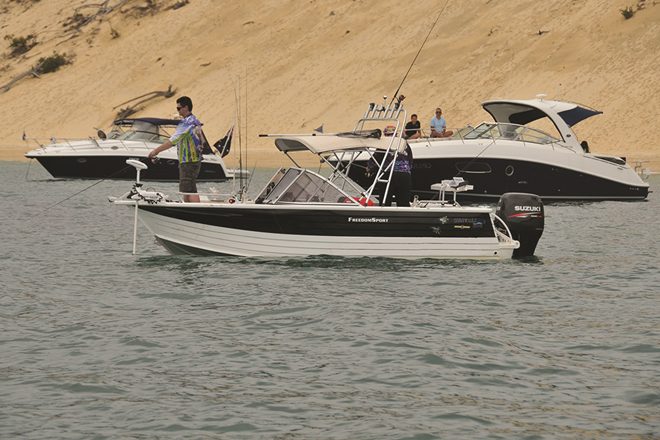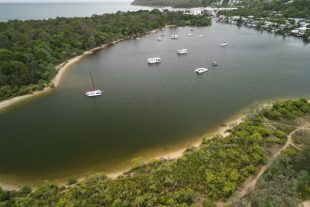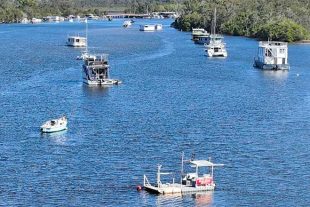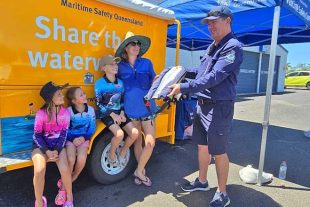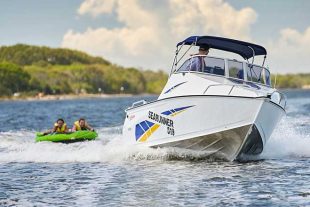GETTING your numbers right is an essential part of insuring your boat – not just the numbers that relate to the price of the insurance premium but the numbers that will also keep you out of strife.
One of the first sets of numbers you will need for insurance is the boat’s hull identification number or HIN.
On Australian-built boats, this is normally found in two places – one being a very obvious location like on a manufacturer’s plate affixed to the hull, and the other often a very difficult-to-access spot known to the manufacturer. The easy-to-find HIN is there so you can correlate the model to its correct ownership and to its registration, noting that registration alone does not constitute proof of ownership. The hidden number is there to make ‘rebirthing’ the boat a more difficult exercise for criminals.
Yes, the hidden number probably can be ground off with power tools if found, but any boat sporting obvious attempts to change or remove marks should make you ultra-suspicious as a prospective buyer. It could also make for an interesting discussion between its current ‘owner’ and the police. The ‘obvious’ HIN number should be affixed to the boat where it can easily be seen such on as the Australian Builders Plate.
The HIN is not unlike a vehicle identification number affixed to new cars. HINs provide a means of identifying the boat and its manufacturer. According to Queensland Transport, it is a requirement that the ABP be fitted on new and imported recreational boats.
The HIN also includes other relevant information a specialist marine insurer like Nautilus will want to know, such as the maximum horsepower for which the boat is rated, the maximum number of adults it is approved to carry and the maximum weight of gear that can be carried. The plate also will show the type of built-in flotation in the vessel. A ‘basic’ level of flotation means the manufacturer states the boat has been designed not to sink, should it capsize. The term ‘level’ flotation means the boat may become fully flooded but it will sit the right way up in water.
The outboard will also have an identification number stamped on it that will indicate the manufacturer, model and horsepower as well as the production unit number. Collectively, these numbers are incorporated as a manufacturer’s serial number. Many outboards also have microdots sprayed on them.
Invisible to the naked eye, they can be scanned with a reader and provide yet another source of identification – primarily for security purposes. Your trailer will also have a plate affixed to it indicating the production serial number as well as various factors relating to the aggregate trailer mass and gross trailer mass.
There are many other numbers to be found around your boat – they not only help you to prove various components actually belong to you, but also help give your specialist marine insurer an accurate description of the brand and model. So, while you’re recording numbers on your boat, you might as well have a look for some others you can include on your marine insurance documentation. Good ones to note are the the beacon hex ID and serial number of your EPIRB and your maritime mobile service identity.
Note your MMSI relates to you and where you live rather than the boat and where it might currently be located. And then there’s your marine radio, your chartplotter and sounder and your entertainment system. All will have an identification number, ordinarily referred to as a serial number.
Why not record the actual model numbers of your fishing rods and fishing reels as well? If you have them noted, it will help ensure that you and your marine insurance specialist can process the claim for your full entitlement in the event of an insurance claim. These numbers also will be very helpful to police if your boat and/or equipment are ever stolen.
Check your policy to ensure these components are covered by your insurance – not just the boat, motor and trailer. Specialist marine insurers like Nautilus understand what boat electronics are – they can help you check you’ve got everything covered. As always, any special conditions and excesses should always be explained clearly in your insurance policy’s product disclosure statement. Always check your PDS and if you have a query, ask for clarification.
If you need further information, you can contact Nautilus Marine Insurance on 1300 780 533 for any boat insurance requirements.
 Bush ‘n Beach Fishing Magazine Location reports & tips for fishing, boating, camping, kayaking, 4WDing in Queensland and Northern NSW
Bush ‘n Beach Fishing Magazine Location reports & tips for fishing, boating, camping, kayaking, 4WDing in Queensland and Northern NSW

